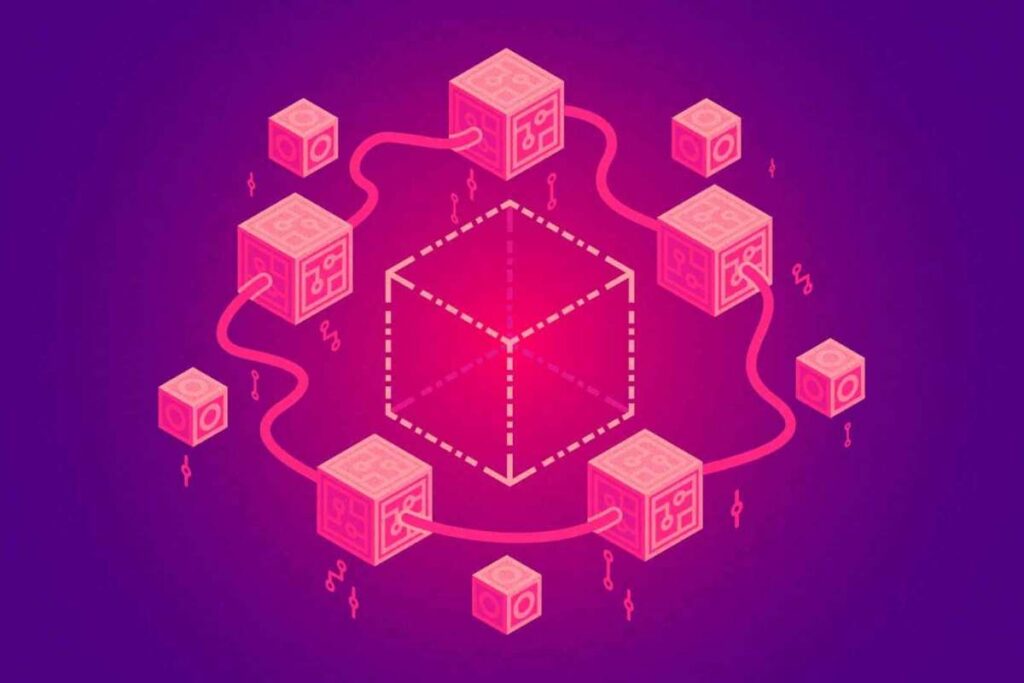In recent years, trust is no longer built solely on institutions, intermediaries, or long-standing reputations. Instead, it’s increasingly established through transparent, traceable, and tamper-proof systems. Once the backbone of Bitcoin and other cryptocurrencies, blockchain technology has become a foundational layer for innovation in healthcare, logistics, finance, and public governance. As we proceed into 2025, its presence is no longer experimental; it’s practical, visible, and irreplaceable in some industries.
However, despite its momentum, blockchain brings a unique mix of possibilities and problems, innovation and inefficiency. What makes it revolutionary in some sectors renders it problematic in others. Its use cases are multiplying from secure supply chains to real-time voting systems, but so are the challenges around scalability, regulation, energy usage, and integration with legacy systems.
Understanding the advantages and disadvantages of blockchain technology is no longer a topic reserved for tech insiders. In 2025, it’s not just tech companies that must pay attention. From finance professionals to supply chain managers, more people ask the same question: Does blockchain solve the problem at hand, or does it create new ones? This article will discuss this transformative technology and how it will drive the formative years.
What Exactly Is Blockchain?
Blockchain is a decentralized, distributed ledger system that allows data to be recorded securely and immutably across a network. Unlike traditional databases maintained by a single organization or administrator, a blockchain relies on consensus among network participants to validate and record transactions. This process enhances transparency, minimizes tampering, and removes the need for centralized control.
The system groups transactions into “blocks,” linked using cryptographic hashes. Each new block references the hash of the previous one, forming a continuous, unchangeable chain. Once recorded, the information in a block cannot be altered without modifying every block that comes after it, something that’s practically impossible without majority control of the network.
In 2025, this structure will prove beneficial not only for cryptocurrencies but also for sectors like intellectual property, healthcare data management, and logistics. As new frameworks like zero-knowledge proofs and sharding emerge, blockchain is becoming more efficient and privacy-conscious.
The Advantages of Blockchain Technology
1. Transparency and Traceability
One of blockchain technology’s most substantial advantages is its unmatched level of transparency. All transactions are time-stamped and visible to all participants in the network, creating a shared version of the truth. This is particularly useful in supply chain management, where knowing the origin and status of goods in real time can reduce fraud and improve safety.
2. Enhanced Security
Unlike centralized databases, blockchains are inherently resistant to cyberattacks. Each block contains a cryptographic hash that connects it to the previous one. Changing any piece of data requires rewriting every subsequent block across the network. This built-in security is invaluable in today’s world, where data breaches are increasingly common.
3. Decentralization
Blockchain eliminates the need for a central authority. This decentralization helps reduce bottlenecks, fraud risks, and single points of failure. In finance, for example, blockchain allows for peer-to-peer payments without banks or clearinghouses. In healthcare, it enables secure sharing of patient data across providers without relying on a central database.

4. Smart Contracts
Smart contracts are self-executing programs built into a blockchain. They automatically enforce agreements when predetermined conditions are met. In real estate, this can mean automatic transfer of ownership upon payment. In insurance, claims can be settled instantly without human intervention.
5. Cost Reduction and Speed
By removing intermediaries and automating processes, blockchain can lower operational costs and speed up transaction times. International money transfers that took several days can now be completed in minutes or seconds. Businesses are especially drawn to these efficiencies in 2025 as automation becomes the norm.
6. User Control Over Data
Blockchain allows users to control their personal data without relying on centralized platforms. Individuals can selectively share verified information without exposing everything. In a world increasingly focused on privacy, this decentralized control stands out as one of the core advantages of blockchain technology in 2025 and beyond.
The advantages and disadvantages of blockchain technology often surface simultaneously, and many of these benefits are deeply connected to the challenges that hinder blockchain’s scalability and adoption.

The Disadvantages of Blockchain Technology That Still Persist
1. Scalability Limitations
Despite years of development, blockchain still struggles with scalability. Public blockchains like Bitcoin and Ethereum can handle only a limited number of transactions per second. While newer systems like Solana and Ethereum 2.0 have improved speeds, they still lag behind traditional payment networks like Visa. This makes large-scale adoption in specific industries difficult.
2. Energy Consumption
Proof-of-Work (PoW) consensus algorithms, though secure, are notoriously energy-intensive. Bitcoin mining, in particular, continues to draw criticism for its environmental impact. While many newer blockchains are shifting to more sustainable models like Proof-of-Stake (PoS), energy use remains a hot-button issue for regulators and environmentalists.
3. Complexity and Integration Challenges
Blockchain is not plug-and-play. For most organizations, adopting the technology means overhauling legacy systems, retraining employees, and navigating steep learning curves. Integrating blockchain with existing infrastructure can be time-consuming and costly.
4. Regulatory Uncertainty
One of the pressing disadvantages of blockchain technology in 2025 is the lack of consistent global regulation. Some governments embrace it, others restrict it, and many are undecided. This patchwork of rules creates uncertainty for businesses hoping to scale blockchain solutions across borders.
5. Data Privacy vs. Transparency
Blockchain’s transparency, while beneficial, can also be problematic, especially in sectors where confidentiality is crucial. For example, storing personal health records on a public ledger may conflict with privacy laws like GDPR. Although permissioned blockchains and encryption methods offer some relief, these trade-offs complicate the blockchain’s role in sensitive industries.
6. Irreversibility of Data
While immutability is a strength, it also means errors are permanent. If incorrect data is entered or someone sends assets to the wrong address, there’s no way to reverse the action. This can be a significant drawback in industries where flexibility and human oversight are necessary.
How Different Industries Are Incorporating Blockchain in 2025?
→ Healthcare
Medical institutions use blockchain to streamline patient data sharing, improve record accuracy, and reduce fraud. Patients have more control over their data, choosing when and with whom to share it. However, privacy remains a balancing act.

→ Finance
DeFi (Decentralized Finance) continues to grow, offering services like lending, insurance, and trading without traditional banks. Despite massive gains in transaction speed and accessibility, regulation and volatility still present significant barriers.
→ Supply Chain
Companies like IBM and Walmart use blockchain to track goods from origin to shelf. This increases consumer trust and helps identify sources of contamination or delay instantly. However, small suppliers may find it challenging to meet the technological requirements for integration.
→ Government Services
Some governments are experimenting with blockchain-based voting systems and digital IDs. While the potential for fraud reduction and increased accessibility is high, voter privacy and infrastructure readiness concerns persist.
These case studies highlight that the advantages and disadvantages of blockchain technology are highly context-dependent. What works seamlessly in one industry may face intense friction in another.
Blockchain in Government: Hope or Hurdle?
Several countries are experimenting with blockchain in public systems, e-voting, land registries, and identity verification. The potential is enormous. Citizens can verify transactions on their own. Election results become instantly verifiable. Property records can’t be quietly altered or forged.
Yet the challenges are just as significant. Data privacy laws like GDPR don’t always align with blockchain’s immutability. Citizens’ personal information must be protected while maintaining transparency, a delicate balance not all systems have managed to strike.
The advantages and disadvantages of blockchain technology play out very clearly here: while offering radical accountability, blockchain can also expose private data or make error correction nearly impossible.
Will Blockchain Become Mainstream?
The journey of blockchain in 2025 is one of both progress and restraint. Innovations like Ethereum’s Layer 2 scaling, zero-knowledge proofs, and multi-chain networks address old weaknesses and enable more practical applications. As organizations become more comfortable navigating the risks, the technology is gradually shedding its experimental image.
Yet for all its promise, blockchain is not the right tool for every problem. Blind adoption without a clear business case can result in wasted resources and unmet expectations. The technology’s value lies not just in its novelty, but in its alignment with specific goals, transparency, security, or process automation.
Ultimately, the most sustainable use of blockchain comes from thoughtful adoption, not hype-driven implementation. Businesses that recognize blockchain technology’s advantages and disadvantages are best positioned to turn its potential into long-term success.
Conclusion
Blockchain has come a long way since its early days as a niche concept tied to cryptocurrency. In 2025, it will be one of the most talked-about and implemented technologies across industries. It offers a compelling alternative to traditional systems with benefits like security, transparency, and automation. However, its challenges, especially around scalability, energy use, and regulation, are real and must be addressed with clarity and strategy.
The advantages and disadvantages of blockchain technology aren’t just talking points for tech panels; they’re key factors in making informed, future-ready decisions. As the world becomes more connected and digital trust becomes a cornerstone of progress, blockchain will either lead the way or be a cautionary tale of overpromised disruption. The outcome depends not on the technology but on how wisely we use it.


















